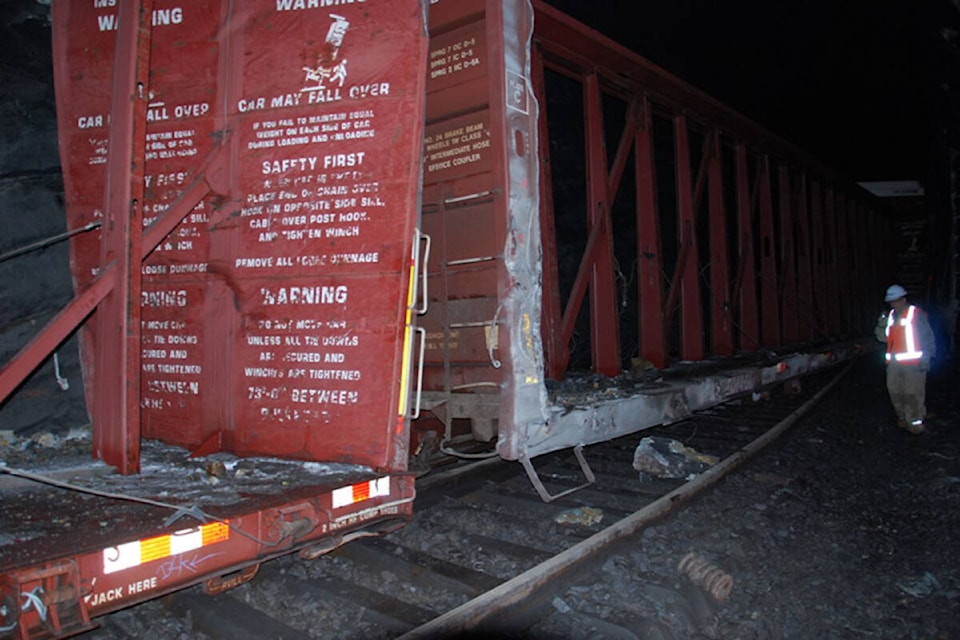The Transportation Safety Board says an “undesired” release of air brakes led to the derailment of 15 empty cars near Field, B.C. in 2019.
As well, the investigation found another undesired release had occurred prior to the derailment, but a decision was made to continue. An undesired release of air brakes happens when the air pressure in a train’s brake pipe spontaneously increases, causing an automatic release.
The Transportation Safety Board released its report Wednesday (July 19) on the Canadian Pacific Railway freight train incident in the Upper Spiral Tunnel, known for its steep grades and sharp curves. There was no fire, no dangerous goods involved, and there were no injuries.

On the morning of Jan. 3, 2019, a mixed-merchandise freight train hauling 159 rail cars — 13 carrying dangerous goods — was headed to Port Coquitlam from Calgary.
While descending the Field Hill section of tracks, an undesired release alert activated as the front end of the train was exiting the Upper Spiral Tunnel. The locomotive engineer made the required full-service brake application and applied the dynamic brakes to bring the train to a controlled stop, but the rapid deceleration led to a block of loaded cars at the tail of the train running into empty cars near the centre. That led to the derailment of 15 empty cars in the Upper Spiral Tunnel.
The train was assembled by grouping cars destined for the same location, with several heavy loaded cars placed at the rear end of the train for the first stop in Golden.
TSB said the investigation revealed that although the train cleared CP’s computer-based train marshalling verification program before leaving, it wasn’t compliant with the railway’s general operating instructions. The instructions state heavy cars must be places as close as possible to the head of the train and light cars as close as possible to the rear, unless the cars behind them are also relatively light.
The investigation also found the train had an undesired release of air brakes about six hours earlier to the derailment, but a decision was made to continue on without an alternative plan.
The safety board noted the decision to proceed likely did not take into consideration the risks associated with potential high in-train forces should another release of air brakes occur, especially with the steep descending grade and sharp curves of Field Hill.
Following the derailment, CP issued a maintenance alert to inspect certain rail cars and make necessary repairs. It also conducted an extensive review and analysis of mixed-merchandise train makeups and issued an operating bulletin concerning restrictions for handling mid-train empty cars on westward trains.
@laurenpcollins1
lauren.collins@blackpress.ca
Like us on Facebook and follow us on Twitter.


